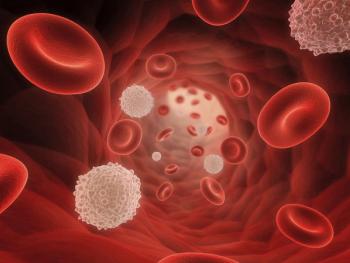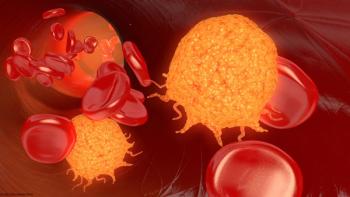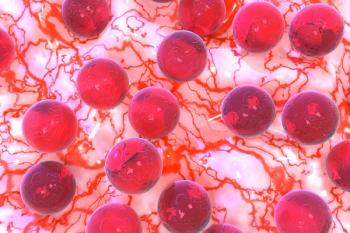
CD19 Inhibitor Shows Promise in Non-Hodgkin Lymphoma
A novel inhibitor of CD19 was well tolerated and showed promising activity in patients with relapsed or refractory B-lineage non-Hodgkin lymphoma, according to a phase I study.
A novel inhibitor of CD19 was well tolerated and showed promising activity in patients with relapsed or refractory B-lineage non-Hodgkin lymphoma (NHL), according to a phase I study. Results were presented at the 2014 American Society of Clinical Oncology (ASCO) Annual Meeting in Chicago.
Andres Forero-Torres, MD, of the University of Alabama at Birmingham, presented the study and said that new treatment approaches are still urgently needed in this patient population. About 40% of relapsed/refractory NHL patients do not respond to salvage therapy, and around 80% don’t respond to third-line treatment following salvage therapy and have an overall survival of only about 4 months.
SGN-CD19A is a humanized anti-CD19 monoclonal antibody, and clinical activity has been seen in other trials of patients with acute lymphoblastic leukemia. CD19 is the most widely expressed antigen in B-cell malignancies.
The new phase I trial was an open-label dose escalation study with 7 different dose levels. No dose-limiting toxicities have yet been found, and the 3, 4, and 5 mg/kg dose cohorts have been expanded. The initial cohort was 59% male with a median age of 65 years. Most patients included had diffuse large B-cell lymphoma (86%), while 11% had mantle cell lymphoma and 3% had grade 3 follicular lymphoma.
Out of the total study group of 37 patients, there were six complete responses (16%) and five partial responses (14%) for a total objective response rate of 30%. Three of the complete responses came at the 4 mg/kg dose and one each at 1, 2, and 3 mg/kg doses. There were two partial responses at 6 mg/kg, 2 at 5 mg/kg, and 1 at 4 mg/kg. Progressive disease (35% of patients) was spread across the dose levels.
Most adverse events were grades 1 and 2. Grade 3 or higher adverse events seen in at least two patients included blurred vision, keratopathy, thrombocytopenia, and anemia.
Vision problems were generally a notable characteristic of therapy with this drug, with 84% of patients experiencing some eye event. Two patients (5%) discontinued treatment as a result, and five (14%) had dose delay or reduction. Most of these resolved with treatment or were downgraded to grade 1 or 2, and Forero-Torres said the impact of steroid prophylaxis is under evaluation.
“Preclinical data demonstrate synergy with relevant standard of care agents,” Forero-Torres said. “Encouraging antitumor activity with manageable toxicities enables novel combination regimens.”
Newsletter
Stay up to date on recent advances in the multidisciplinary approach to cancer.
















































































